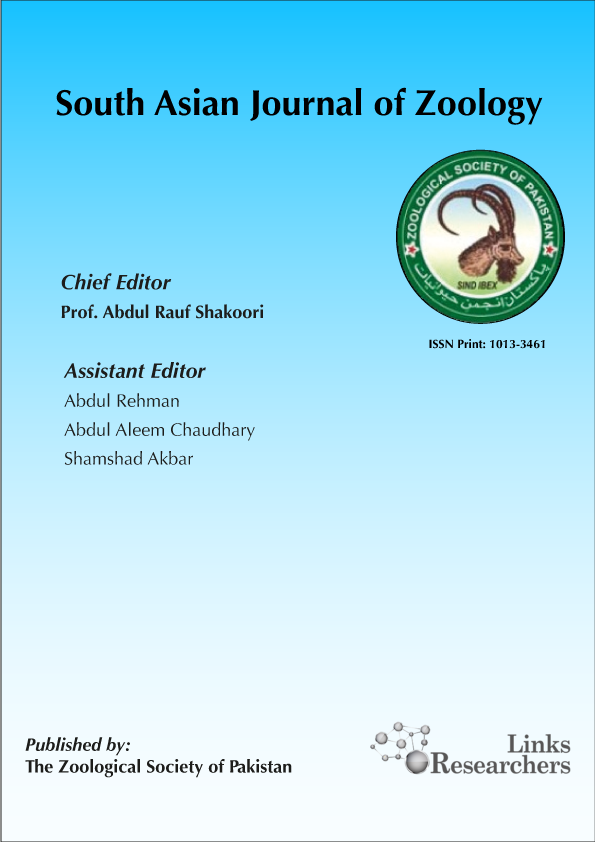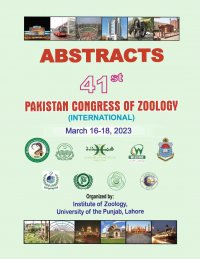Shakeel Ahmad1, Muhammad Israr2*, Muhammad Amin3, Muhammad Sadiq Hashmi4, Nafees Ahmad5 and Rasheed Ahmad6
Shakeel Ahmad1, Muhammad Israr2*, Rasheed Ahmed3, Anam Ashraf1, Muhammad Amin4 and Nafees Ahmad5
Muhammad Umar1*, Mubashar Hussain1 and David C. Lee2
Roy Malindo1, Anuraga Jayanegara2, Osfar Sjofjan3, Siti Chuzaemi3*
Saqib Mehmood1, Bushra Allah Rakha1*, Muhammad Sajjad Ansari2, Ali Akhter1, Nadeem Munawar1 and Tariq Mahmood1
habitations and natural streams of Mori Said Ali Game Reserve (AJ&K)
using stomach-content flushing and fecal analysis. Of the recorded 17
dietary items, ten (59%) were of plant origin and seven (41%) were of
animal origin. Pyrus pashia (80%) and Isodon rugosus (0.37 ml) were
recorded as the most frequent plant species in fecal samples and
stomach contents, res...
Aamir Shakeel1*, Anwar Ali2, Tahir Iqbal1 and Ziad Raza1
Mubashar Hussain*, Habiba Razaq, Muhammad Faheem Malik, Kiran Aftab, Jaweria Riaz and Somia Liaqat
Mubashar Hussain*, Takhmina Nazir and Muhammad Faheem Malik
Mubashar Hussain*, Syeda Nafeesa Kazam, Aqsa Noreen, Suleman Hussain Shah, Uswa Zeb and Aniza Iftikhar
Hareem Fatima1, Lubna Ansari1*, Sajjad Haider Zaidi2, Shazia3, Saqib Mehmood4 and Nasim Iqbal Butt5
Zheng Han1, Junbo Liu2, Jingyao Luan2, Changlong Gao2, Yufeng Tai2, He Liu2, Saipeng Zhang2, Guanqiang Zhai2, Xi Yang1,3, Haitao Wang1,4*
Somia Liaqat, Mubashar Hussain*, Kiran Aftab, Maryam Khalid and Suleman Hussain Shah










